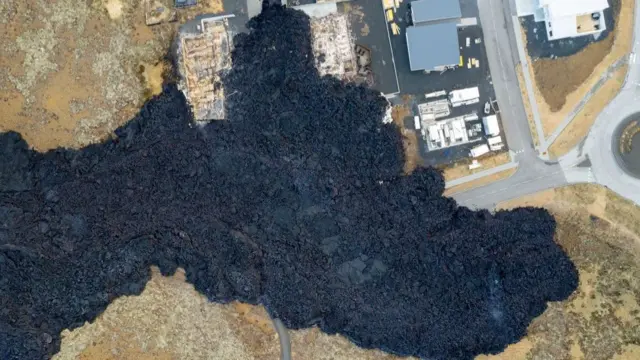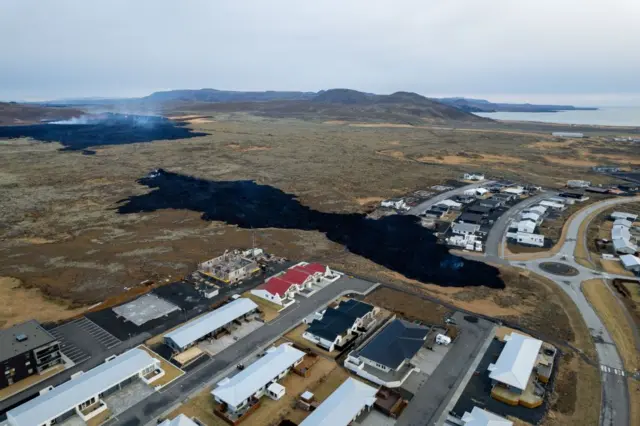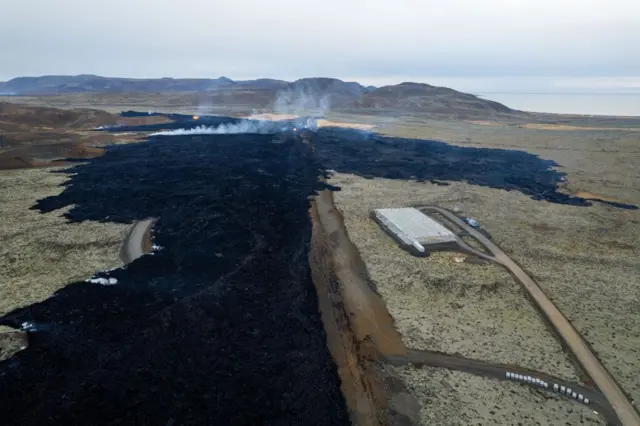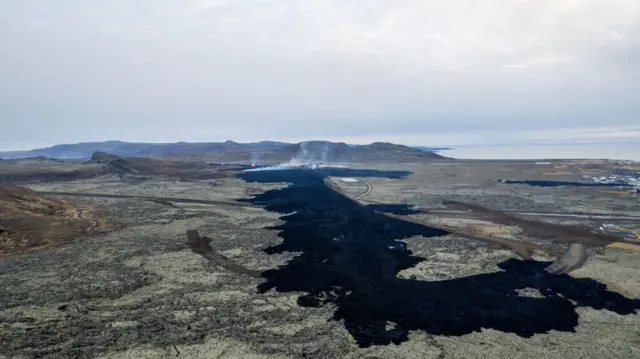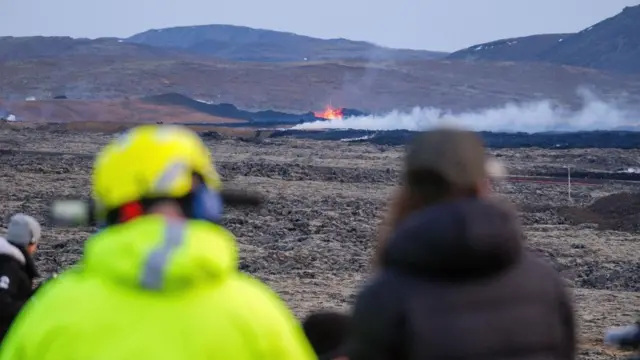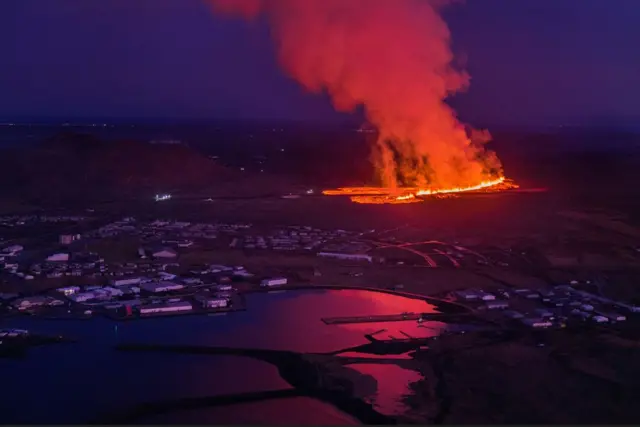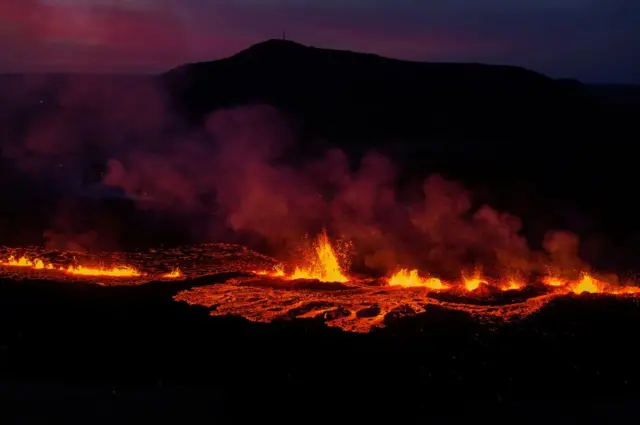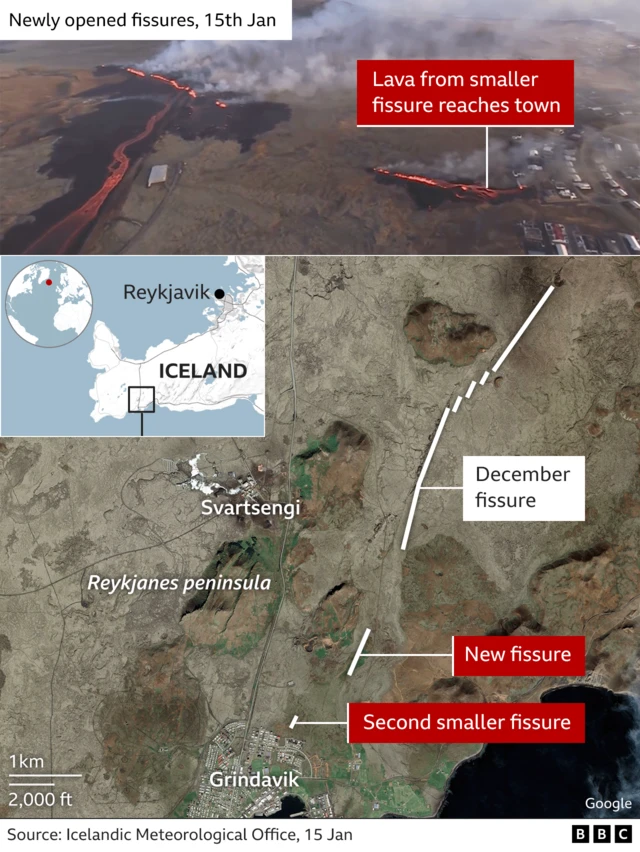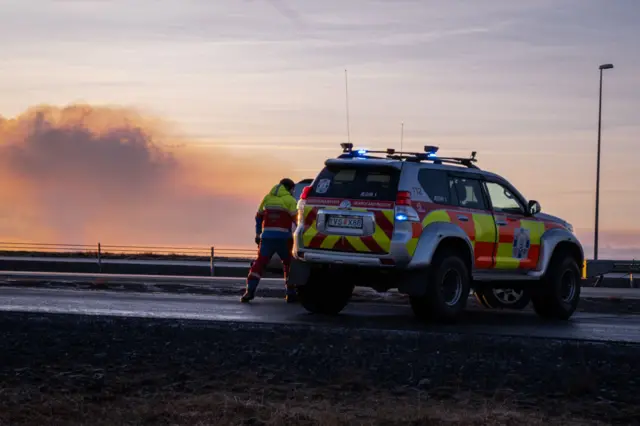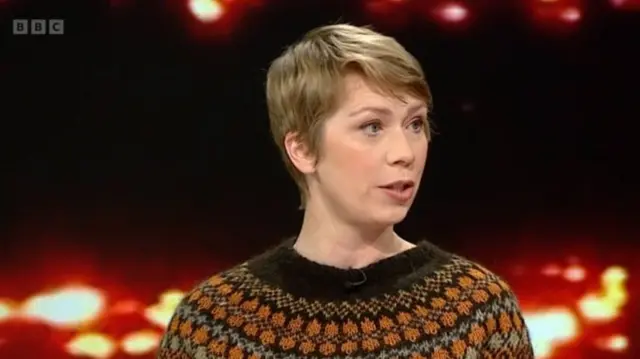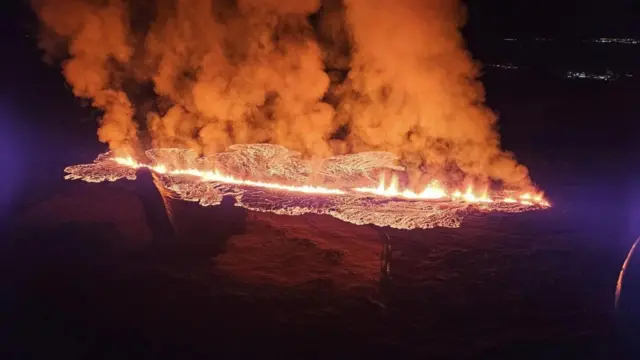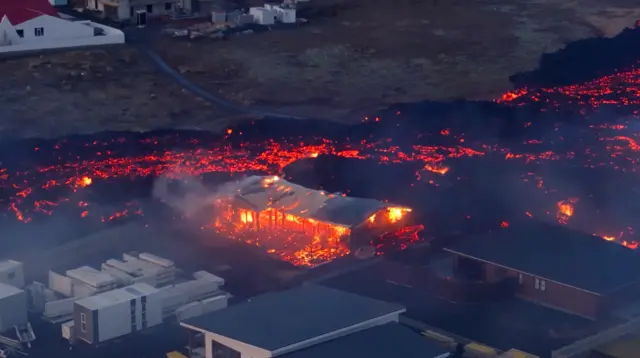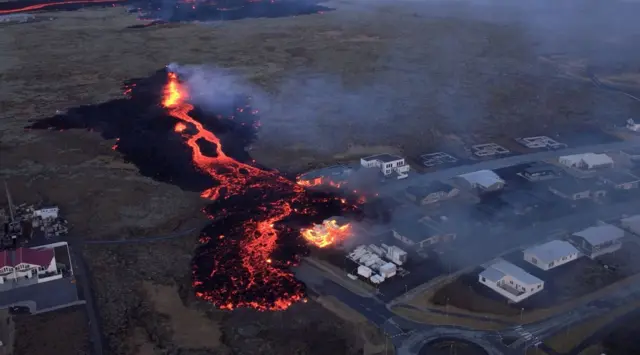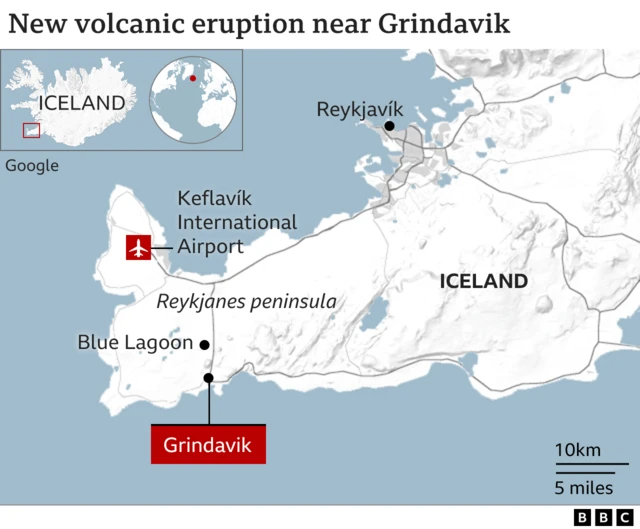Thanks for following our live coveragepublished at 17:08 GMT 15 January 2024
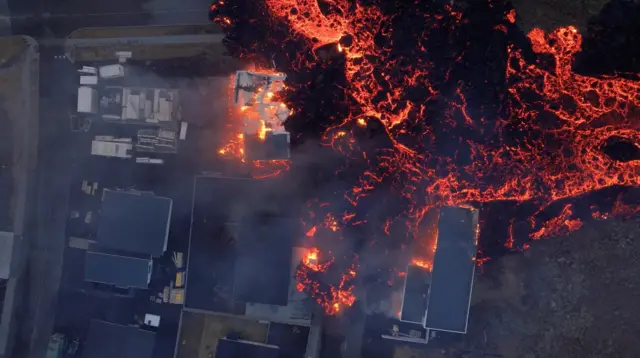 Image source, Reuters
Image source, ReutersLava flows from a volcano as houses burn in Grindavik on Sunday
We're pausing our live coverage of the latest volcanic eruption in Iceland for now.
Here's a quick recap of today's key lines before we go:
- The Icelandic Meteorological Office says the situation near the southwestern town of Grindavik is greatly improved after a volcanic eruption on Sunday
- This saw magma spilling out of one fissure and into part of the town on Sunday - destroying a number of houses
- Nobody was harmed - residents were all moved to safety in time but it is unclear when they will be able to return home
- One resident said he fears "this town might be over" and he may need to "start all over, somewhere else"
- Grindavik was first evacuated in November, after a different eruption, but some locals had been allowed to return
- There was also an eruption in December. This latest event is the the fifth to have taken place along the Reykjanes Peninsula since 2021
- The rest of Iceland has not been affected and flights in and out of the country have been operating as normal.
Today's page was brought to you by Kathryn Armstrong, Marita Moloney, Fiona Nimoni and Lauren Turner.


